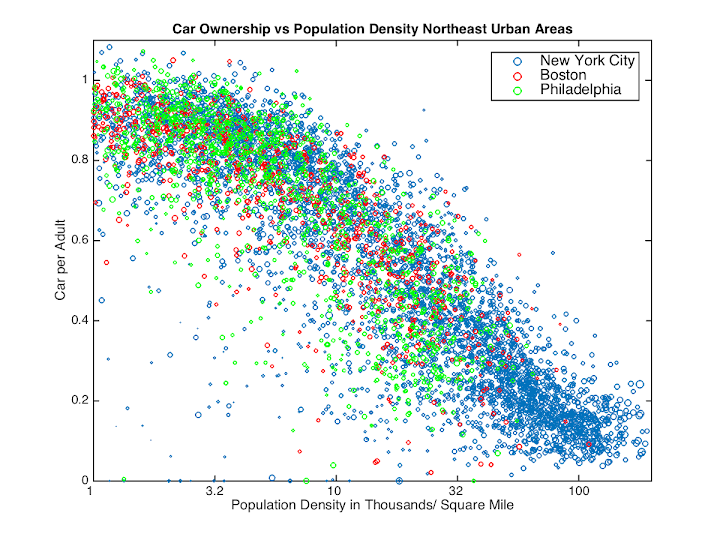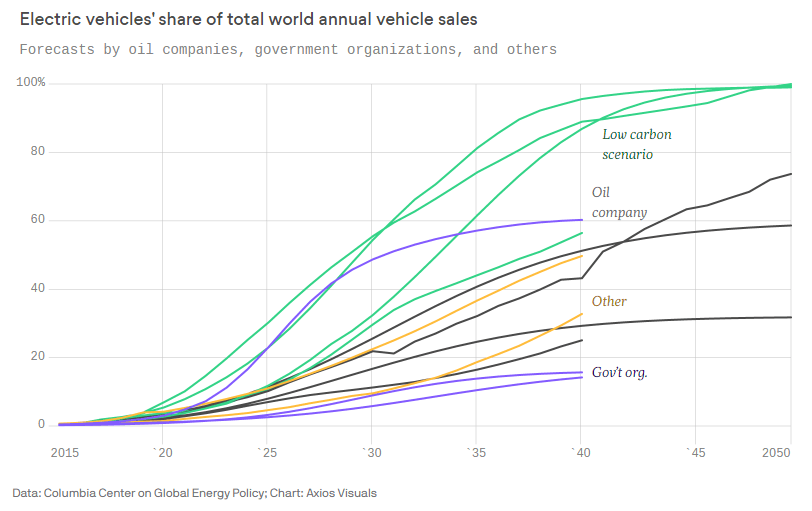COVID-19 will accelerate enhanced mass transit user experience and the transition to EV fleets
Considering our current state of ambiguity, it can be
particularly challenging to balance near-term and long-term transportation
priorities. While containment measures to curb COVID-19 have forced us to adapt
our behaviors, many have come to realize the value of public services such as
mass transportation during this pivotal time. Currently, 36%
of essential workers
around the U.S. rely on public transit to commute to
their jobs. When factoring in additional commutes to access healthcare
facilities and vital goods (among many other things), public transportation continues
to demonstrate its value as a critical service not just during a time of crisis
– but always.
The ability to move plays a critical part in our day-to-day
lives, and the restoration of our mobility systems will be a key indicator of
recovery. While transit agencies around the country are suffering a steep drop
in ridership with estimates of up
to $40 billion
in total budget shortfalls, experts agree that a return to
pre-COVID work and commuting patterns will not resemble a light-switch simply flipping
back on. In what will be a gradual easement back to normal, cities can use this
period to test solutions that address both near-term COVID-19 social distancing
concerns of over-crowding on buses and trains as well as long-term service and
sustainability goals.
Cities will continue to grow, and innovation in mobility can be leveraged to address both uncertain ridership demand in the near term, and growth in the long-term.
Many have speculated whether the current pandemic will usher in new social, work, and commuting behaviors that might permanently impact our cities and the transportation networks they depend on for movement and growth. We already know that transportation will remain a lifeline to cities under normal conditions and when shelter-in-place orders are put into effect. What we do not know is how to address volatile or uncertain demand that will persist in what is shaping up to be an ambiguous short-term, while at the same time advocating and preparing for sustained long-term growth in demand once things are back to normal.
It is no mystery that the majority of COVID-19 cases are found in our urban cores. However, it is remarkable that the 100 hardest hit U.S. counties with confirmed cases – most of which are found in metropolitan areas – generate 51 percent of the country’s GDP and over 88 million jobs according to a recent Brookings Study. While proximity to one another might be one of the factors leading to an uptick of cases in urban areas, urban agglomerations of people, goods, and services is, and will continue to be, an accelerator of social, cultural, and economic prosperity. Where history has tied innovation to economic development, urban centers have often been credited as the enabler of innovation. If we will continue our resilience after COVID-19, it is safe to say that cities will continue to be the cup from which innovation flows from.
Public transit agencies, however, face an uphill battle due to budgetary concerns and potential behavioral shifts of away from mass transit. Data estimates show a 77% declinein daily nationwide public transit ridership since the start of shelter-in-place orders. Given the onerous challenges that lay ahead, transit agencies have economics on their side, as mass transit will still be the most effective means of urban mobility due to the sheer throughput efficiency of rail and bus service. To adequately address instability in demand, however, innovation is likely to trigger changes in supply and ridership experience.
What does this look like in practice? It means more user-centered approaches to transportation planning that leverage real-time demand analytics to match fleet size, schedule, and route across modes. More optimal trip planning will be necessary to manage demand and help maintain strict ridership capacity standards (should they come about) post-COVID, in addition to improving rider experience for sustained ridership in the long term.
Personal vehicles will not make a long-term comeback, and EV fleets will take over.
Fears that COVID-19 will draw people back to cars and away from more sustainable forms of transportation are misconstrued. While car ridership might increase in the short-term recovery, data showing
increases
in bike ridership
is also consistent around U.S. cities. Just as cities will continue to innovate and grow, shared sustainable transportation will remain a necessity to facilitate this growth.
Figure 1:
A look at car ownership figures relative to population density in Northeast U.S. Urban Areas (by census tract).
As a different curve grabs the headlines, in this observation we see that when cities become denser, the number of cars per adult decreases. Why is that? One big reason is that when cities densify, alternative mode-choices (such as walking or biking) become much cheaper, faster, and more efficient means to access all that we might desire. So long as cities continue to grow and cost of owning and operating a car remains considerably higher than taking alternate means, it is hard to believe that car ridership, let alone ownership, in urban areas will rise considerably in the long-term aftermath of COVID-19.
As car ridership might spike and take a steady decline, car ownership will take a much sharper hit. The traditional models of car ownership will be replaced by demand-based vehicles or shared-ride fleet services that operate on subscription models. These vehicles will operate alongside micro-mobility solutions such as shared bikes and scooters, serving as last-mile connections that feed and complement bus and rail service. The current change in commuter consciousness surrounding mode choice in the post-COVID recovery could accelerate this process, and cities and auto-manufacturers alike should use this period as an opportunity to test new service models under the aligned goal of getting cars off the street, while at the same time supporting new business models that sustain the auto manufacturing industry.
Underlying improved commuter experience and fleet-based service models will be the increasing deployment of Electric Vehicles (EVs) and EV infrastructure triggered by oil supply fluctuations. As calls for major infrastructure projectsto help propel the economy forward are being made, any infrastructure investment should prioritize the expansion of EV power supply networks. Along with the decline of CO2 emissions, additional benefits include increased energy independence during a volatile period in the global oil market and in the event of future energy shocks, as well as the market opportunity that comes with being a global leader in EV technology. It is time to start embracing electric power and focus investment into sustainable electric energy generation and storage technology to enable a full-scale rollout of EVs.
Figure 2:
Projections of EV adoption by various industry
It is only a matter of time for innovative solutions to our urban mobility challenges to take root.
When confronted with times of uncertainty, it is often best practice to recall historic events in anticipating what the path forward looks like. An often-cited case of urban resilience is that of the Cholera pandemic that spread across the globe throughout the 1800s. As bacteria from sewage leaked into the water supply around urban centers, innovators rose to the challenge to create the first modern wastewater system to prevent sewage leakage. Not only did these wastewater systems save lives, but they also allowed cities like New York and London to grow, become denser, and transform into the cultural and economic capitals they are today.
Currently, as COVID-19 has effectively shut down mobility in most cities, the future seems ripe for innovation within this sector. Changes to the user experience of mass transit are already underway through innovation such as real-time bus and rail crowdedness data
, and collaborations are continuing to proactively scope and address solutions to mobility challenges (such as City Tech’s own Advanced Mobility Initiative
). While we will still see many of the same trends we had before the pandemic, COVID-19 has the potential to accelerate shifts in creating more modular routing options for seamless transfers, increasing commuter choice and multimodal connectivity, as well as faster EV adoption. Cities will continue to grow and be beacons of innovation long beyond the current COVID-19 pandemic; a core piece of this innovation and resilience will be in the opportunity that cities have right now to test new ideas that will improve how we move about our communities.
About the Author: Firas Suqi is the Manager of the Advanced Mobility Initiative and Millennium Gateway Innovation Lab at City Tech Collaborative. Firas leads the solution development pipelines for both the Initiative and the Lab, including assembling the cross-sector teams necessary to create new solutions to complex urban mobility challenges. Prior to joining City Tech, Firas was a Mobility Expert at UN-Habitat, where he worked on strategizing large-scale urban mobility and infrastructure projects across emerging megacities. Firas is a native Chicagoan with experience working in over a dozen cities across four continents. He holds a master’s in Urban Planning from Harvard University’s Graduate School of Design in addition to a Bachelor’s in Anthropology & Sociology from Knox College.

